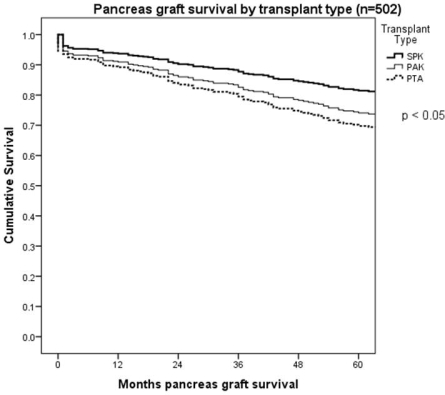Pancreas Transplantation Immunosuppression Induction With Rabbit Antithymocyte Globulin +/- Rituximab and Early Steroid Withdrawal: Experience With >500 Recipients
1Surgery, Indiana University School of Medicine, Indianapolis, IN
2Pharmacy, Indiana University School of Medicine, Indianapolis, IN
3Medicine, Indiana University School of Medicine, Indianapolis, IN.
Meeting: 2015 American Transplant Congress
Abstract number: 228
Keywords: Immunosuppression, Induction therapy, Pancreas transplantation
Session Information
Session Name: Concurrent Session: Optimizing Immunosuppression in Pancreas Transplantation
Session Type: Concurrent Session
Date: Monday, May 4, 2015
Session Time: 2:15pm-3:45pm
 Presentation Time: 2:27pm-2:39pm
Presentation Time: 2:27pm-2:39pm
Location: Room 119-B
T-cell depleting antibody induction, often combined with steroid withdrawal, has become standard practice for pancreas transplantation. In this study, outcomes of >500 pancreas transplants using rATG with early steroid withdrawal were reviewed. Methods:The induction immunosuppression protocol consisted of five doses of rATG (1 mg/kg/dose) and maintenance with tacrolimus (TAC) (target trough level 8-10 ng/mL) and sirolimus (SIR) (target trough level 3-6 ng/mL). Steroids were exclusively used as premedication for rATG and were discontinued following induction in all recipients, including PAK recipients on maintenance steroids for a prior renal transplant. Maintenance for PTA recipients consisted of a three drug regimen of TAC (target trough 6-8 ng/ml), SIR (target trough 3-6 ng/ml) and mycophenolate mofetil (500 mg po bid). Due to the relatively high incidence of chronic immunologic pancreas graft loss, as of Oct 2007 for PTA and March 2012 for SPK and PAK, a single dose of rituximab (150 mg/m2) was added on POD 1. Results: 502 pancreas translplants were performed between 2003 and 2014 (54% SPK, 20% PAK, 26% PTA). Median F/U was 70 months. KM 5 year graft survival is depicted in the figure.  70% received rATG alone (median F/U 91 months); 30% also received rituximab induction (median f/u 30 months). 7 day and 90 day graft loss were 3% and 6%. 1 year patient and pancreas graft survival were 96% and 92%. Rejection occurred in 4% and infections in 45% (CMV 10% and BK 5%). Comparing with or without Rituximab, there was no signifcant difference in graft or patient survival, rejection or infection rate. Conclusion: rATG induction with steroid withdrawal and a tacrolimus/sirolimus based maintenance protocol is very effective. Addition of Rituximab is safe, but longer follow-up is required to determine its true impact on formation of DSA and development of chronic rejection.
70% received rATG alone (median F/U 91 months); 30% also received rituximab induction (median f/u 30 months). 7 day and 90 day graft loss were 3% and 6%. 1 year patient and pancreas graft survival were 96% and 92%. Rejection occurred in 4% and infections in 45% (CMV 10% and BK 5%). Comparing with or without Rituximab, there was no signifcant difference in graft or patient survival, rejection or infection rate. Conclusion: rATG induction with steroid withdrawal and a tacrolimus/sirolimus based maintenance protocol is very effective. Addition of Rituximab is safe, but longer follow-up is required to determine its true impact on formation of DSA and development of chronic rejection.
To cite this abstract in AMA style:
Fridell J, Mangus R, Chen J, Mujtaba M, Taber T, Goble M, Powelson J. Pancreas Transplantation Immunosuppression Induction With Rabbit Antithymocyte Globulin +/- Rituximab and Early Steroid Withdrawal: Experience With >500 Recipients [abstract]. Am J Transplant. 2015; 15 (suppl 3). https://atcmeetingabstracts.com/abstract/pancreas-transplantation-immunosuppression-induction-with-rabbit-antithymocyte-globulin-rituximab-and-early-steroid-withdrawal-experience-with-500-recipients/. Accessed December 29, 2025.« Back to 2015 American Transplant Congress
